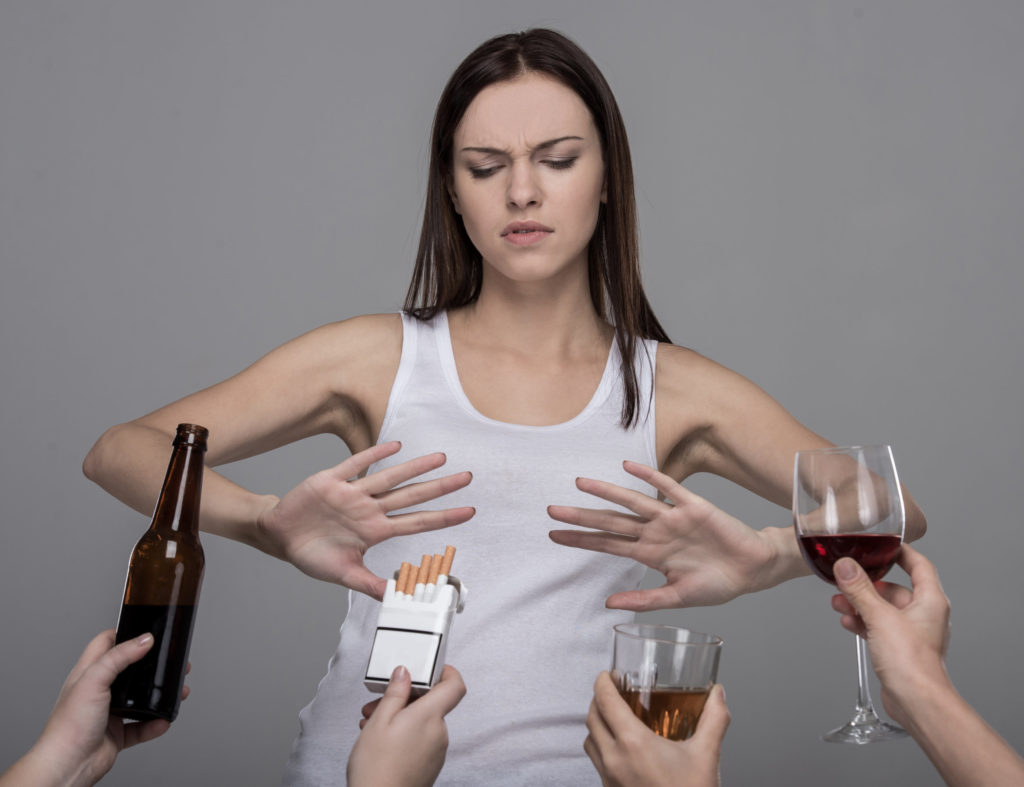Teen Alcohol Poisoning

Going to parties, tailgating, and cheering on a favorite sports team are common ways for teens to relieve stress and be with friends. For some, this includes drinking and occasionally having too much too quickly or binge drinking. The consequences of large amounts of alcohol are severe and can be deadly.
Rapidly drinking in excess can affect breathing, body temperature, heart rate, and in extreme circumstances, can cause a coma and death. Alcohol poisoning can also occur when teenagers go to a party and drink alcohol intended for adult consumption—continuously drinking despite direct signs of impairment will cause an alcohol overdose.
Alcohol overdose can occur when an excess of alcohol hastily enters the liver faster than it can be metabolized, causing the alcohol to enter the bloodstream rapidly. This will begin to impact the brain, controlling essential life-supporting functions for teens. It can significantly affect their long-term and short-term memory development, formation of neurological pathways, and physical damage to their organs; furthermore, it can result in coma or even death.
Easy Access to Alcohol
Though there are parents who condone drinking underage, mainly focusing on teaching their child “safe” drinking patterns, only one in four parents sanction alcohol use under their supervision. This may give the teenager a false sense of “this is okay because my parents allow me to do it,” despite medical professionals showing the consequences of underage drinking. There have been movements to lower the drinking age to 18 years old, with the primary benefit being most teenagers are still living at home with parents to help navigate drinking responsibly. This rarely considers the development of the teens’ brain and the lack of impulse control to stop drinking, or abstaining from peer pressure to continue drinking past their personal limits.
Teenage Alcohol Poisoning Statistics
In a 2019 report, the CDC observed teenage students over a month, and here are their findings:
- 29% drank alcohol
- 17% rode with a driver who had consumed alcohol
- 5% of drivers drove intoxicated
- 14% binge drank

Alcohol Poisoning vs. Being Drunk
Being drunk is when the blood alcohol content (BAC) is 0.08% or higher, which is when a person is considered legally impaired. One can track the BAC of alcohol consumption with a breathalyzer; the blood alcohol content begins to spike about 15 minutes after consuming the first drink. In many states, one can be deemed “noticeably impaired” when under the legal limit but still showing signs of impairment. The difference between drunk and alcohol poisoning being drunk is anything over the BAC limit of 0.08% whereas alcohol poisoning is much more serious, with a BAC ranging from 0.25-0.399%. Anything over 0.399% is life-threatening and can result in death.
Signs and Symptoms of Teen Alcohol Poisoning
It’s crucial to know the difference between a regular hangover and alcohol poisoning. There can be an array of reasons causing hangovers; alcohol overdose is an intensification of those signs and symptoms that lead to more severe injuries or complications. It’s essential to seek medical attention if you believe someone is experiencing alcohol poisoning.
Mild Alcohol Poisoning Symptoms:
- Feelings of being weak and tired
- Muscle pains
- Lack of appetite due to nausea
- Stomach ache or vomiting
- Dizzy feelings
- Shaking hands
- Increased heart rate
- Intense thirst
Severe Alcohol Poisoning Symptoms:
- Lowered body temperature or loss of warmth, known as hypothermia
- Pale skin or blue lips or fingers
- Slow breathing
- Breathing irregularities
- Increasing heart rate
- Vomiting
- Seizures
- Falling unconscious
Risk Factors for Alcohol Poisoning
Risk factors for alcohol poisoning include:
- Age
- Gender
- Weight
- Rate of alcohol consumption
- Concentration of alcohol in the beverages consumed
- Beers are typically 5% (range is from 3–15%)
- Wines are typically 13.5% (range is from 8%–17%)
- Spirits are typically 30%-40% (range is from 15% to, in some rare cases, up to 98%)
- Amount of food eaten
- Any medications taken
- Sensitivity to alcohol or tolerance
Alcohol intolerance can cause some uncomfortable reactions. Signs and symptoms can include stuffy nose and flushing of the skin. This is caused by genetics, which makes the body unable to break down alcohol. The only preventative care for an alcohol allergy is to avoid alcohol completely.
Someone younger and smaller will likely be affected by consumption of alcohol more quickly than someone older and larger, but every person is different. Different body types process alcohol differently for several reasons, including body fat content and the concentration of the liver enzyme that breaks down the alcohol. Hormones may also be a factor. There is no hard and fast rule, but it is recommended that people should have no more than one drink per hour to allow the liver time to metabolize the alcohol and reduce intoxication. An individual’s overall health should be taken into account when drinking; someone who is on the healthier side will have their body processing the alcohol at a quicker rate than that of someone who is not as healthy.
Alcohol poisoning affects the body by affecting every organ. For teenagers, this can stunt the development of vital organ growth; for instance, alcohol use has been known to shrink the brain, causing blackouts, behavioral changes, and slurred speech. Other systems alcohol impacts can be heart damage, lung infections, and liver damage. The consequences alcohol poisoning has on the body are made apparent and, for teens, can result in a coma or death.

What to do the next day after having alcohol poisoning?
After having alcohol poisoning, the next day one should be resting – getting out of bed only if absolutely necessary. Tips for recovering the day after alcohol poisoning include:
- Drinking 8 glasses of water throughout the day.
- Eating proper foods.
- Getting enough sleep and rest.
- Reducing caffeine consumption.
- If this is an ongoing problem look into treatment options and plans for teen alcohol rehab.
Teen Alcohol Addiction Treatment
Teens experiencing alcohol poisoning should go to the hospital the moment they feel symptoms and should seek medical attention immediately. A trained medical professional can assess what treatment plan is needed to ensure the safety of overcoming the alcohol overdose. Once at the hospital, treatment for alcohol poisoning can include:
- Medical monitoring to prevent choking or breathing difficulties
- Fluids given intravenously(IV) to prevent dehydration, give additional vitamins, and glucose to replenish the patient’s body
- Pumping the stomach
- Hemodialysis to remove toxins and waste from the body
- Inserting a tube to aid their windpipe in breathing properly
Be sure to check if the state offers a “911 immunity law.” This law ensures teens will not encounter any trouble with the medical professionals; they are simply there to help ensure the teen with alcohol poisoning is okay and contact parents to ensure teens get home safely.
Safe Landing Recovery offers a teen alcohol treatment program to help with ongoing alcohol abuse. During treatment, teens learn coping skills without the use of drugs or alcohol. These everyday skills will help the development of the teens’ social queues and ability to say no if peer pressure is affecting their behavior. Two major types of therapy have proven to be very effective in teen substance abuse treatment:
- Cognitive behavioral therapy for teens is available to help identify, disrupt, and restructure negative thoughts allowing the teen to live a healthier, happier life.
- Dialectical behavior therapy for teens is available to help with practicing principles for life skills which can include emotion balancing and stress management.
Prevention
While the CDC has recommendations on what they believe to be a good resolution for teen alcohol abuse, there are action steps parents can take to ensure their child says “no” to the peer pressure of drinking.
- Have ongoing conversations about alcohol with your teen. Maintain a firm position that drinking is not okay for teenagers. Then educate the teen about alcohol itself – this can help prepare them for situations they may find themselves in and help the teen make more intelligent choices.
- Don’t allow access to alcohol. Parents may consider locking alcoholic beverages up somewhere safe or not keeping them in the house to remove temptation – this can protect teens in the long run.
- Get help if the teen has already identified a drinking problem. Medical and mental health professionals can assist in discovering the root cause of teen alcohol use and help them overcome addiction, enabling them to thrive.
To learn more about Safe Landing Recovery programs for teen alcohol abuse, call 844-486-7205.
Resources
Mayo Foundation for Medical Education and Research. (2018, January 19). Alcohol poisoning. Mayo Clinic.
National Institute on Alcohol Abuse and Alcoholism. (2021). Understanding the Dangers of Alcohol Overdose. National Institute on Alcohol Abuse and Alcoholism. https://www.niaaa.nih.gov/publications/brochures-and-fact-sheets/understanding-dangers-of-alcohol-overdose.
Centers for Disease Control and Prevention. (2020, October 23). Underage drinking. Centers for Disease Control and Prevention. https://www.cdc.gov/alcohol/fact-sheets/underage-drinking.htm
Fletcher, J. M. (2019). ESTIMATING CAUSAL EFFECTS OF ALCOHOL ACCESS AND USE ON A BROAD SET OF RISKY BEHAVIORS: REGRESSION DISCONTINUITY EVIDENCE. Contemporary Economic Policy, 37(3), 427–.

